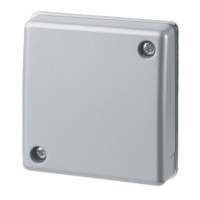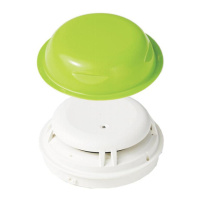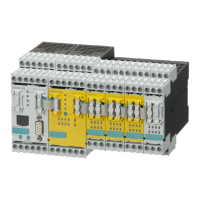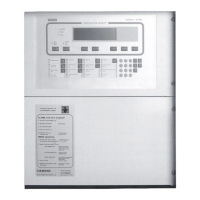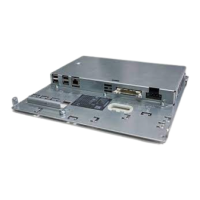4/8 CC1N7781E June 01, 1999 Landis & Staefa Division
Basic mode of operation of the flame safeguards in connection with the LEC1
burner control
When used with the LEC1, the flame safeguard feeds the flame signal into the burner
control's control program the same way as if the flame safeguard was a component of
the burner control (same as with an oil or gas burner control).
In the event of non-ignition, loss of flame during burner operation, or faulty flame signal
during burner off or purge times, the burner will always be shut down and the burner
control will initiate lockout.
The switching functions needed to feed the flame signal into the burner control's
control circuit are provided by flame relay «FR» of the flame safeguard and the two
auxiliary relays «HR1» and «HR2» of the LEC1 burner control.
The LEC1 also delivers the program for the flame simulation test in connection with
the LAE10, and the UV detector test with the LFE10.
The tests are controlled via the connecting line between terminal 15 of the burner
control and terminal 6 of the respective flame safeguard.
Both tests
• start about 7 seconds after a controlled shutdown
• are continued during burner off times
• are continued during the ensuing pre-purge time
• end 3 seconds before the start of the safety time
Any flame signal detected during this test time, caused by
– extraneous light
– ageing UV detectors
– other defects of the flame supervision equipment,
leads to lockout with interlocking of the LEC1 burner control.
In the flame safeguard, the switching functions required are performed by auxiliary
relay «HR3».
Since in the case of flame supervision with a flame rectification probe, it is not
necessary to carry out a test, the connecting line between terminal 15 of the burner
control and terminal 6 of the flame safeguard is not required here.
Instead, terminal 6 must be connected to the live wire.
For example: by making a connection to terminal 1, 5 or 7.
Any flame signal – be it a normal flame signal during operation or a faulty signal - is
indicated by the indication lamp on the flame safeguard.
Function

